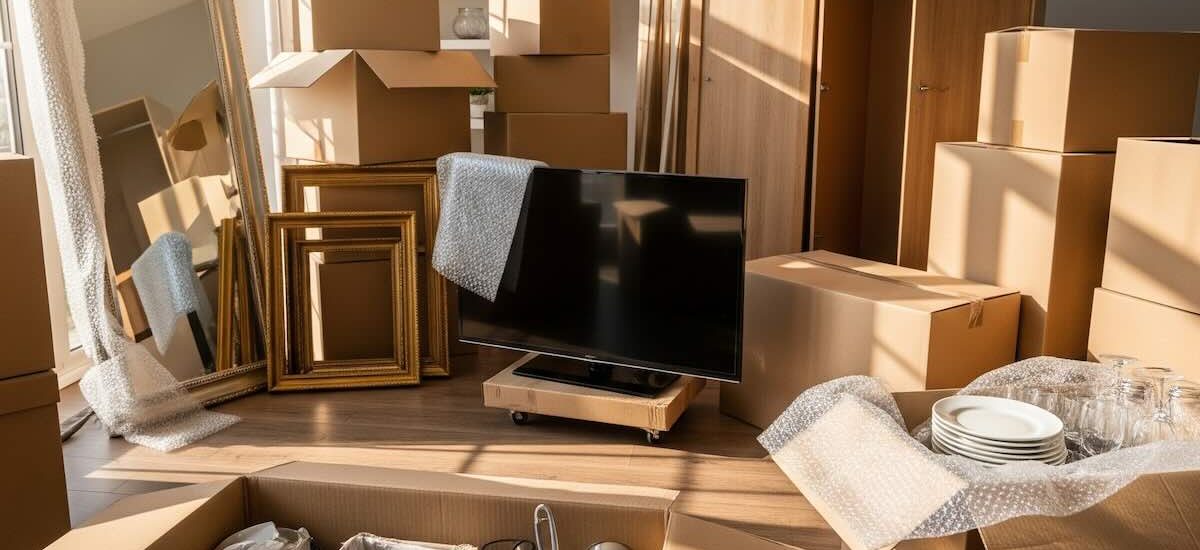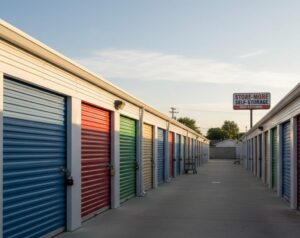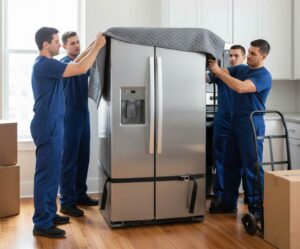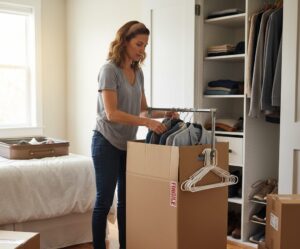Here is a box size cheat sheet for efficient moving by Coastal Moving Services.
Packing for a move can be overwhelming, especially when it comes to fragile or oddly shaped items like mirrors, picture frames, TVs, and kitchen essentials. Choosing the right box size and using proper packing techniques protects your belongings and makes your move more efficient. This comprehensive cheatsheet will serve as a pillar resource for packing various household items with the ideal box sizes and helpful tips.
Understanding Box Sizes and Why They Matter
Boxes come in many sizes and styles, including standard, specialty, and custom sizes, designed to accommodate different types of belongings. Selecting the right size box is crucial for:
- Preventing damage during transport by minimizing shifting inside boxes
- Organizing your move efficiently by grouping similar items
- Making handling easier for movers and yourself
Common box sizes range from small (12″ x 12″ x 12″) to large (24″ x 18″ x 18″) and extra large specialty boxes like wardrobe or mirror boxes designed for specific item types.
Box Sizes and Packing Tips for Fragile and Special Items
Mirrors
Mirrors require extra care due to their fragility and size variations. Use specialty mirror boxes that provide ample padding space.
- Small mirrors: 24″ x 36″ mirror boxes are ideal for mirrors up to 24 x 36 inches.
- Large mirrors: Get custom or adjustable mirror boxes that can accommodate sizes up to 48″ x 72″.
- Packing tips: Wrap mirrors in bubble wrap or foam sheets and secure them inside the box with corner protectors. Always keep mirrors upright.
Picture Frames and Artwork
Picture boxes come in various depths and sizes to protect framed photos, paintings, and prints.
- Small picture boxes: 16″ x 20″ boxes fit smaller frames like 11″ x 14″ photos.
- Medium and large boxes: 18″ x 24″ or 24″ x 30″ boxes accommodate larger artwork.
- Packing tips: Use glassine paper to protect artwork surfaces and add plenty of padding inside the box. Seal and label clearly.
Televisions (TVs)
Modern flat-screen TVs need sturdy, well-padded boxes designed to minimize vibrations and shocks.
- Original TV boxes: Best for exact fit and maximum protection if you kept them.
- Universal TV boxes: Available for sizes ranging from 32″ to 65″ and above; look for adjustable foam inserts.
- Packing tips: Remove detachable parts and cords, use screen protectors, and keep TVs upright during transport.
Kitchenware
Kitchen items vary widely, so choosing the right box size depends on item type and fragility.
- Small boxes (12″ x 12″ x 12″): Ideal for utensils, glasses, mugs, and small gadgets.
- Medium boxes (18″ x 18″ x 16″): Perfect for plates, pots, pans, and medium appliances.
- Specialty boxes: Dish packs with cell dividers protect fragile dishes and stemware.
- Packing tips: Wrap each item individually in bubble wrap or packing paper. Use dish pack dividers and fill empty spaces with cushioning materials to prevent shifting.
Additional Packing Tips for a Successful Move
- Label every box clearly with contents and room destination.
- Use heavy-duty tape to secure all boxes properly.
- Don’t overpack large boxes to avoid breakage and make carrying easier.
- Consider color-coding boxes by room for easier unpacking.
- Always keep an inventory checklist of packed boxes.
Summary Table of Recommended Box Sizes
| Item Type | Recommended Box Size | Packing Tips |
|---|---|---|
| Mirrors (Small) | 24″ x 36″ Mirror Box | Use corner protectors, bubble wrap, keep upright |
| Mirrors (Large) | Custom Adjustable Mirror Box (up to 48″ x 72″) | Extra padding, secure upright position, fragile label |
| Picture Frames & Artwork | 16″ x 20″, 18″ x 24″, or 24″ x 30″ Picture Boxes | Glassine paper, bubble wrap, label contents |
| TVs | Original or Universal TV Boxes ranging 32″-65+” | Remove accessories, use screen protector, transport upright |
| Kitchen Utensils & Small Appliances | Small Boxes: 12″ x 12″ x 12″ | Wrap individually, fill gaps with padding |
| Dishes, Pots, Pans | Medium Boxes: 18″ x 18″ x 16″, Dish Packs with Dividers | Use dividers, cushion well, avoid overpacking |
Moving Box Size Cheat Sheet + Smart Packing Tips (U.S.-sourced)
Quick best practices
- Label every box clearly with contents and destination room.
- Use heavy-duty, 2″-wide packing tape and reinforce all seams (avoid masking/cellophane tape).
- Don’t overpack large boxes—keep most boxes at or under ~40–50 lb for safer lifting.
- Color-code by room (stickers or tape) to speed up delivery and unpacking.
- Keep a master inventory (box number → contents → room); check off on load-in and delivery.
| Box Type | Typical Dimensions (in) | Volume | What to Pack | Suggested Max Weight* | Reference (U.S.) |
|---|---|---|---|---|---|
| Small (book box) | 16⅜ × 12⅝ × 12⅝ | ~1.5 cu ft | Books, tools, canned goods, small appliances | ≤ 40–50 lb (box often rated to ~65 lb) | U-Haul Small |
| Medium | 18⅛ × 18 × 16 | ~3.0 cu ft | Kitchenware, toys, decor | ≤ 40–50 lb | U-Haul Medium |
| Large | 18 × 18 × 24 | ~4.5 cu ft | Bedding, towels, bulky but light items | ≤ ~40 lb (keep lighter) | U-Haul Large |
| Extra-Large | 24 × 18 × 24 | ~6.0 cu ft | Pillows, comforters, lampshades, coats | ≤ ~35 lb (keep light) | U-Haul XL (catalog) |
| Dish Barrel (Double-Wall) | 18 × 18 × 28 | ~5.2 cu ft | Dishes, glassware (with cell dividers) | Moderate; pad heavily | U-Haul Dish Barrel |
| Wardrobe | 24 × 24 × 48 (with bar) | ~16 cu ft | Hanging clothes; avoid heavy items at bottom | Distribute weight evenly | U-Haul Wardrobe |
| *Keep most boxes ≤ 40–50 lb (NIOSH 51-lb ideal single-person lift; OSHA interpretation). See CDC/NIOSH, OSHA. | |||||
Taping & Handling (U.S. guidance)
- Seal seams with 2″-wide packing tape and reinforce edges; don’t use string, masking, or cellophane tape. See: USPS DMM: “A Customer’s Guide to Mailing”.
- Follow safe lifting: keep boxes close to the body, avoid twisting, and keep weights reasonable. See: OSHA on the NIOSH 51-lb limit and CDC/NIOSH RNLE.
- Don’t overfill/underfill—boxes should close flat without bulging; this maintains strength. See: National Archives packing guidance.
Labeling, Color-Coding & Inventory
Number each box (e.g., Kitchen-03) and maintain a simple spreadsheet (Number → Contents → Room → “Fragile?”). Color-tag rooms (e.g., Yellow = Kitchen, Green = Bedroom) and place a legend at the new home’s entrance. For move-day documentation, use the FMCSA moving checklist.
Sources (U.S. resources)
- U.S. Census Bureau – Geographic Mobility (ACS, 2023)
- Bureau of Labor Statistics – Injuries & Illnesses (2023)
- CDC/NIOSH — Revised NIOSH Lifting Equation (RNLE) & OSHA interpretation
- USPS – A Customer’s Guide to Mailing (DMM 100)
- National Archives — Packing & box-fill guidance
- Dimensions/examples: U-Haul Small, Medium, Large, Dish Barrel, Wardrobe
- FMCSA — Moving checklist & inventory
Conclusion
Choosing the right box sizes and packing with care is fundamental to protecting your fragile, valuable, and bulky belongings during a move. This cheat sheet provides a trusted, comprehensive reference to guide your packing decisions, helping your move go smoothly from start to finish.








